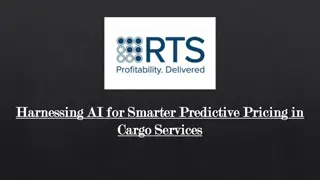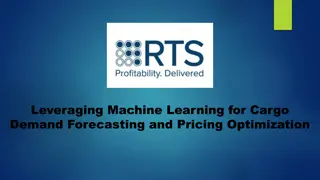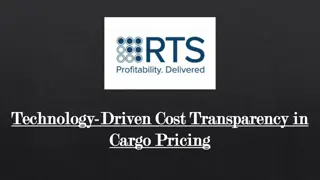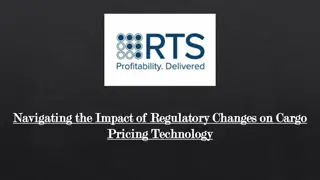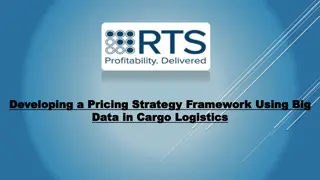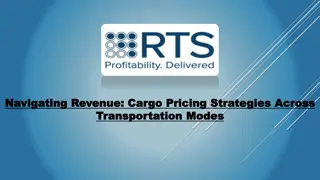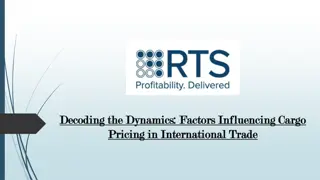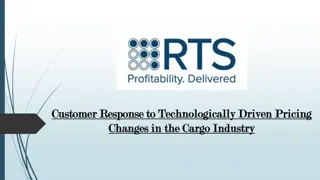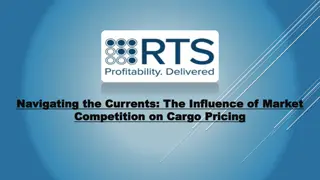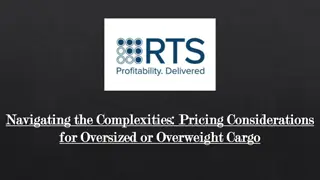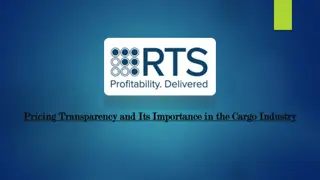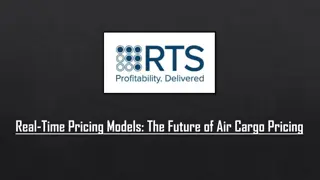
Introduction to Pricing Strategies in Marketing Economics
Explore the fundamental concepts of pricing in economics and finance, including the difference between price and cost. Learn about setting pricing objectives, factors influencing pricing decisions, and various pricing strategies used by firms to achieve different objectives such as survival, profit maximization, market share capture, quality leadership, and more.
Download Presentation

Please find below an Image/Link to download the presentation.
The content on the website is provided AS IS for your information and personal use only. It may not be sold, licensed, or shared on other websites without obtaining consent from the author. If you encounter any issues during the download, it is possible that the publisher has removed the file from their server.
You are allowed to download the files provided on this website for personal or commercial use, subject to the condition that they are used lawfully. All files are the property of their respective owners.
The content on the website is provided AS IS for your information and personal use only. It may not be sold, licensed, or shared on other websites without obtaining consent from the author.
E N D
Presentation Transcript
Marketing Marketing By Prof:- MANEET KAUR [Department of Commerce & Management] [I.B.(P.G) College, Panipat]
BBA 2 4TH SEM
Introduction to Pricing? Introduction to Pricing? Pricing, as the term is used in economics and finance, is the act of setting a value on a product. While the basic concept is extraordinarily simple, many wonder about two things: price vs.cost. Price is what the buyer pays for the product or service. Cost is the seller's investment in the product subsequently sold. Pricing is the method of determining the value a producer will get in the exchange of goods and services. Simply, pricing method is used to set the price of producer s offerings relevant to both the producer and the customer.
Definition Of Pricing Pricing is the process of setting pricing objectives, identifying the factors, governing the price, formulating the pricing policies,setting the prices, implementing them and controlling them.
Survival: The foremost Pricing Objective of any firm is to set the price that is optimum and help the product or service to survive in the market. Maximizing the current profits: Many firms try to maximize their current profits by estimating the Demand and Supply of goods and services in the market. Capturing huge market share: Many firms charge low prices for their offerings to capture greater market share. The reason for keeping the price low is to have an increased sales resulting from the Economies of Scale. Market Skimming: Market skimming means charging a high price for the product and services offered by the firms which are innovative, and uses modern technology. Product Quality Leadership: Many firms keep the price of their goods and services in accordance with the Quality Perceived by the customers
Premium pricing: high price is used as a defining criterion. Such pricing strategies work in segments and industries where a strong competitive advantage exists for the company. Example: Porche in cars and Gillette in blades. Penetration pricing: price is set artificially low to gain market share quickly. This is done when a new product is being launched. It is understood that prices will be raised once the promotion period is over and market share objectives are achieved. Example: Mobile phone rates in India; housing loans etc. Economy pricing: no-frills price. Margins are wafer thin; overheads like marketing and advertising costs are very low. Targets the mass market and high market share. Example: Friendly wash detergents; Nirma; local tea producers. Skimming strategy: high price is charged for a product till such time as competitors allow after which prices can be dropped. The idea is to recover mmaximum money before the product or segment attracts more competitors who will lower profits for all concerned. Example: the earliest prices for mobile phones, VCRs and other electronic items where a few players ruled attracted lower cost Asian players.
Skimming pricing policy:- It is also known as Skim the cream pricing policy. Companies favour setting high prices to skim the market Market Penetration:-Some companies want to maximise unit sales. They believe that a higher sales volume will lead to lower unit costs and higher long run profit. They set the lowest price, assuming the market is price sensitive. Price lining policy:-Various products are priced according to their quality standards.Basically price varies with quality. Full-Line Strategy:-Method in which all items comprising a family of products are priced relative to one another, and are discounted as a package. Break-Even policy:-It is the point at which cost is equal to revenue. Fixed cost + Variable cost = Total cost / Break even price. Promotion pricing policy:-It is the sales promotion technique which involves reducing the price of a product or services in short term to attract more customers & increase the sales volume. Dual pricing policy is a situation in which the same product or service is sold at different prices in different markets.
CONCLUSION CONCLUSION It is clear that pricing strategies play the most unique role in that it changes often, most volatile business strategy and is dependent and interactive. ... Pricing makes a business decide how much advertising or marketing a product gets because of the relationship to cost and consumer happiness.

